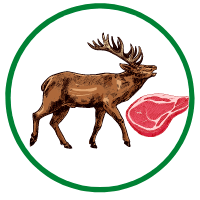Wild Game Meat
(Ultimate Guide)
This is an ultimate guide of wild game meat. So if you're wondering:
Then this article is for you. Let's get started:
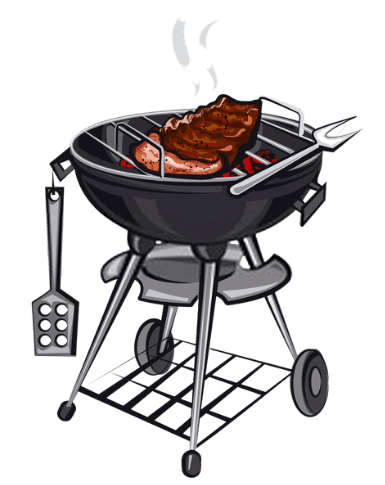
Content
(Big thanks to feedback of Mark Hall - The Hunter Conservationist)
What Is Wild Game Meat?
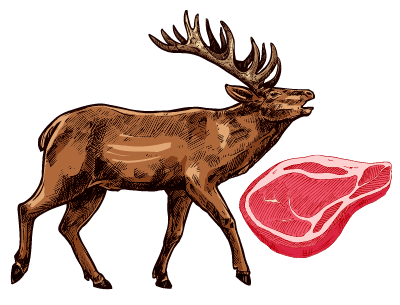
Wild game meats are from non-domesticated, free-ranging and farm-raised wild animals and birds that either are legally hunted for personal consumption or reared, slaughtered, and commercially sold for food. (FoodSafety.com)
The meat of this type is highly sought after and is heavily consumed by both hunters and non-hunters alike.
Wild game meat is valued by most for its rich taste and healthy composition.
There are many different types of wild game meat to sample, all of which carry their distinct flavor.
There are many options for those wishing to sink their teeth into the most flavorful game meat available, including:
Different Types Of Game Meat

Red Meat
Venison

The term “venison” describes the meat of a wild deer. Venison serves as the most widely consumed of all game meats in most areas of the United States.
Venison can be categorized into several different cuts in much the same manner as beef.
Of these cuts, few are as highly valued as the venison loin, commonly referred to as “backstrap.”
Elk
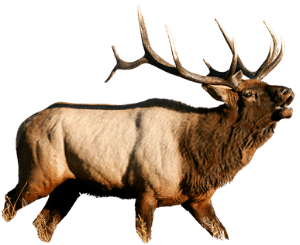
Hunters highly prize elk meat for its high nutritional value and excellent taste. It’s one of the best wild game meat (according to NRA American Hunter).
Due to their large size, elk provide an excellent meat yield when harvested.
Elk meat, like venison, is categorized into several specific cuts and used in a variety of ways.
However, elk meat is not as widely consumed as venison due to the more restrictive home range of the American Elk.
Bison
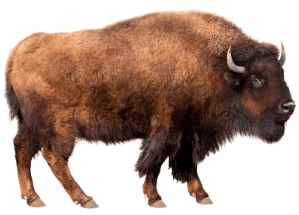
The meat of the American bison is highly similar in taste to that of beef yet is somewhat more coarse in texture.
Because of this, bison meat is cooked in the same traditional manner as beef and is highly prized as steak.
Many also prepare ground bison for use in burgers and chili.
Though bison is quite sought after, its availability is limited due to the relative scarcity of huntable bison populations.
Wild Hog

In recent years, wild hog populations have exploded to more than 6 million (according to the USDA report), presenting a wealth of opportunity for you looking to fill their freezers with quality protein.
The meat of a wild hog can generally be substituted in domestic pork in almost any dish, making its uses virtually endless.
Prepare wild hog on a smoker and use it in numerous barbecue-style dishes.
Antelope

Pronghorn antelope are a staple of the American west, and hunters prize them for their hearty, mild-tasting meat.
However, cook antelope meat carefully. When overcooked, it becomes pretty tough, often also lacking flavor.
On the other hand, you may realize that properly cooked antelope has a slightly sweet taste.
This game meat type is ground for burgers or prepared as steak, as well as roasts.
Caribou

Caribou are among the largest cervid species in North America and are generally found in northern climates.
Like elk, hunters highly prize caribou meat for its rich tastes, which does not tend to be overly gamey.
The caribou meat can also be divided into several different cuts in much the same manner as beef.
Though generally well thought of, this type of meat is far more scarce than venison due to the caribou’s limited range.
Waterfowl (Ducks, Geese, Ect.)

Waterfowl, when correctly prepared, is considered a delicacy in many areas. Duck and geese are typically grilled or roasted and are cooked whole or in part.
In many ways, the taste of duck and goose is similar to that of liver and can be somewhat strong if not appropriately marinated or seasoned.
Waterfowl tend to be a staple of dinner tables across most significant flyways.
Upland game birds
Wild Turkey

Wild turkey provides some of the tastiest meat of any game bird. Though some hunters also utilize turkey legs when making broth, the breast meat of the wild turkey remains most popular.
Season wild turkey breast before being grilled or fried.
You should take special care when cooking wild turkey to prevent excessive dryness from retaining the maximum amount of flavor.
Pheasant

A wide range of people values pheasant meat for its excellent taste and healthy composition.
Pheasants can be cooked whole or can be breasted out, creating tender, bite-sized pieces of meat.
You can cook meat of this type in several manners, including grilling, frying, and roasting.
Pheasants can be found in the wild or farm-raised for consumption.
Dove

Dove meat is widely consumed by hunters due to the bird’s large populations across much of the continental United States.
Doves are typically breasted out before consumption, providing hunters with small yet tasty morsels of meat that can be grilled or fried.
However, several doves are needed to provide enough meat for a sizable meal due to their small size.
Small game
Squirrel

Squirrels make excellent table fare and are abundant in almost every area of the continental United States.
It is commonly used in a variety of stews, including burgoo and gumbo. Many chefs also enjoy frying squirrels for use in several different recipes.
The squirrel is most heavily consumed out of all small game species due to the lengthy seasons offered in most states.
Rabbit

Rabbit is also heavily consumed by hunters and is sought after for its wide range of uses.
Many people use rabbit meat to prepare stews, though this meat is often seasoned and field.
It is also substituted in place of chicken when preparing several traditional Italian dishes.
A significant number of states offer lengthy rabbit seasons, presenting a wealth of opportunity to acquire meat of this type.
Large Carnivores:
Alligator

In many ways, the alligator is a staple of Cajun cooking.
The tail meat of these large reptiles is similar in taste and texture to that of chicken. Consequently, wide ranges of dishes use alligator meat.
Perhaps most popular is fried alligator, which is often served at family functions and hunting camp get-togethers.
Several coastal cajun restaurants also serve alligators as a staple of their menus.
Bear

Bear meat is often consumed by hunters in the western United States and those in the east who reside in black bear country.
Many deem the meat of the black bear to be superior to that of the brown or grizzly bear due to the black bear’s heavily plant-based diet.
Bear meat is often described as rich, with a somewhat sweet taste. However, it is delicious when prepared in any number of slow-cooked dishes.
Exotic Game

Numerous species of exotic game can be hunted in various locations around the world. Perhaps most notable are the countless exotic game species found in Africa.
Hunting ranches in North America import many exotic game species, such as Emu, Ostrich, Kangaroo…
Though the exact qualities of the meat offered by each of these species vary, most are pretty well regarded.
What Are The Benefits Of Eating Wild Game Meat?

Why Should You Eat Wild Game Meat?
There are numerous benefits to the consumption of wild game meat. They range in context, but all offer true value to most any consumer.
The following are several of these benefits and an explanation of how each benefit applies when choosing between wild or domestic meat.
Organic meat
One of the single biggest benefits of wild game consumption is that wild game meat is entirely organic.
It is quite the stark contrast to most domesticated meat raised on processed feed and vaccinated at various intervals.
Wild game animals survive solely upon that which grows naturally in their environment.
Free of chemical
Game animals are also free of any antibiotic chemicals given to domestic stock to eliminate common illnesses such as respiratory disease.
Simply put, wild game meat provides the single most natural source of protein currently available to consumers.
Fewer calories and fat
Wild game meat also tends to be fewer in calories per serving than similar domestic stock.
In addition, compared to domestic animals (cows, chickens, pigs, etc.), the meat of game animals is noticeably lower in fat, especially that of saturated fat.
Fat of this type is far more difficult for your body to metabolize than unsaturated fat.
Across the board, game meat contains an average fat content of just 4.3-percent per serving, while similar servings of domestic meat average 25 to 35-percent fat.
For example, venison contains 149 calories per serving, while a similarly sized serving of bees contains 267 calories.
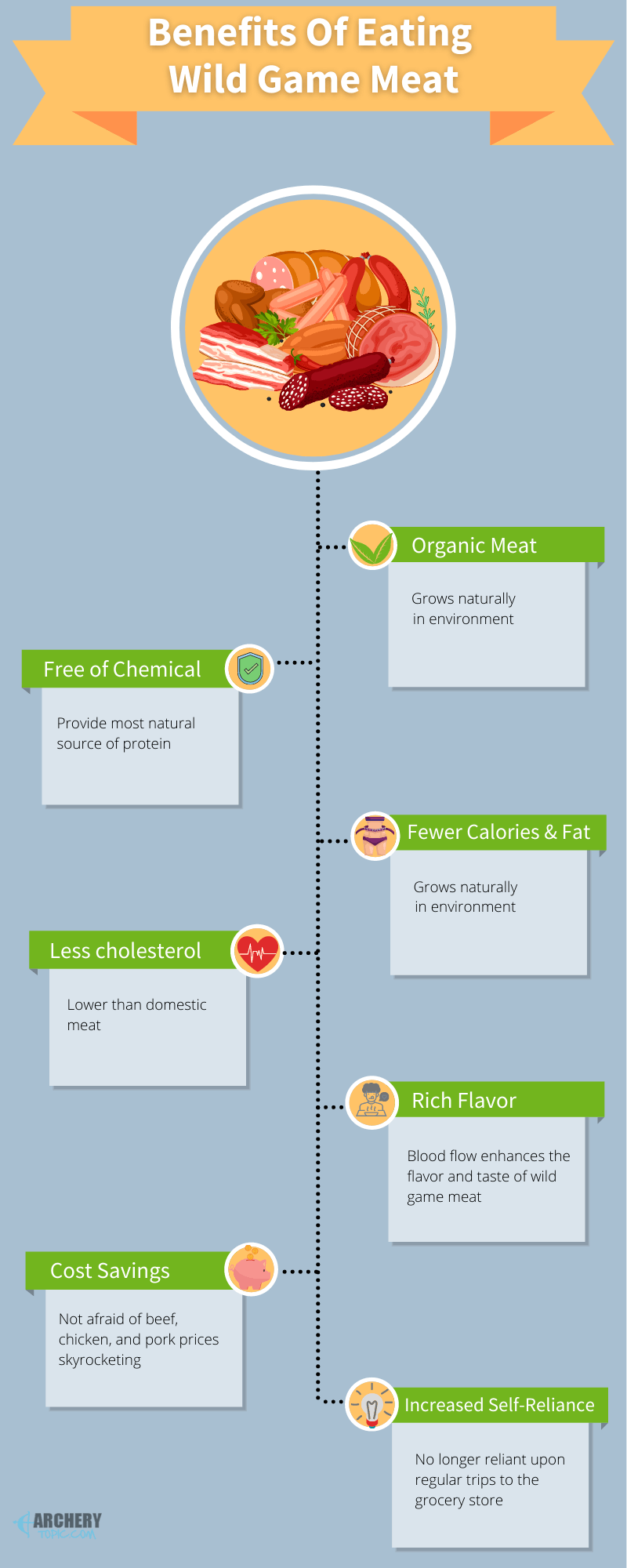
This discrepancy is also obvious when comparing fat content.
A 3.5-ounce serving of venison contains only 1.4 grams of fat, while beef of the same serving size contains 17 grams of fat.
I’ll show you more details about nutrition in the second part below - “wild game vs. domestic meat.”
Less cholesterol
Many who battle high cholesterol will also find favor in the consumption of wild game.
In many cases, the cholesterol content of the wild game is lower than that of domestic meat.
However, you should also caution that this is not always the case.
Certain types of game meat, including rabbit, squirrel, and antelope, tend to be relatively high in cholesterol (100+ mg/3.5-once serving).
Besides that, the game animal’s meat is relatively low in cholesterol, serving as a healthy alternative to domestic meat consumption.
Some game meats with the lowest amount of cholesterol include bison, turkey, and wild boar.
Bison, in particular, is noticeably lower in cholesterol (55 mg/3.5-ounce serving) than similar domestic meat (6.9 mg/3.5-ounce serving).
Noticeably Rich Flavor
Most who have consumed meats of both the wild and domestic variety agree that wild game carries a distinct edge in flavor.
The meat of this type is most often described as being “rich” or “hearty.”
Here’s why:
While some of this flavor can be attributed to the diverse free-range diet consumed by wild game animals, there is another principle at work.
Wild animals are forced to roam quite extensively in their constant search for food, water, and security cover.
Blood flow to a game animal’s muscles is significantly increased with the added movement.
Domesticated stock that is kept in feedlots or other confined areas does not have this additional blood flow.
This blood flow naturally enhances the flavor of wild game meat and gives it a distinct taste all its own.
Cost Savings
Outside of its apparent health and taste benefits, the wild game also provides hunters with a cost-effective means of procuring meat for consumption.
As beef, chicken, and pork prices continue to skyrocket, wild game meat can be obtained simply by taking to the woods with their bow.
With a little careful planning, you can provide your family with enough meat to sustain throughout the year.
These savings alone more than justify the price of hunting licenses and permits and the purchase of some essential hunting gear.
By pursuing multiple game species, you can also diversify your diet by stocking your freezer with a wide variety of meat.
It ensures that you will not become “burnt out” on the consumption of game meat as time passes.
Increased Self-Reliance
Obtaining game meat through your hunting endeavors also increases your level of self-reliance.
With a well-stocked freezer of wild game, a hunter is no longer reliant upon regular trips to the grocery store when planning meals for the week.
Instead, you will have a near-endless supply of healthy, protein-rich meat at the ready, no matter the occasion.
The importance of this self-reliance was highlighted during the COVID-19 pandemic when domestic meat became relatively scarce in supermarkets across the nation.
It came as the result of an interruption in the meat market and its connected supply chain.
Within weeks, many Americans struggled to find the meat of any type in abundance, leading to a certain level of panic.
In such situations, hunters remain relatively unaffected. Thus, while grocery store coolers might have been barren, the freezers of most hunters were not.
For many, the prior season’s efforts had yielded a bountiful harvest of game meat, which could be enjoyed even in the most challenging times.
Record numbers of hunters and fishers were observed taking to the wild during the height of the COVID pandemic.
Wild Game Vs. Domestic Meat

Game meat is also known to be much higher in protein, vitamins, and minerals.
This meat tends to be extremely rich in zinc and iron, making a steady diet of the wild game quite beneficial to anyone who is naturally anemic.
This increase in zinc and iron comes as a byproduct of the diverse diet consumed by wild game animals in most settings.
Below is the nutrition comparison of wild meat vs domestic meat, basing on: calories, fat, protein and cholesterol.
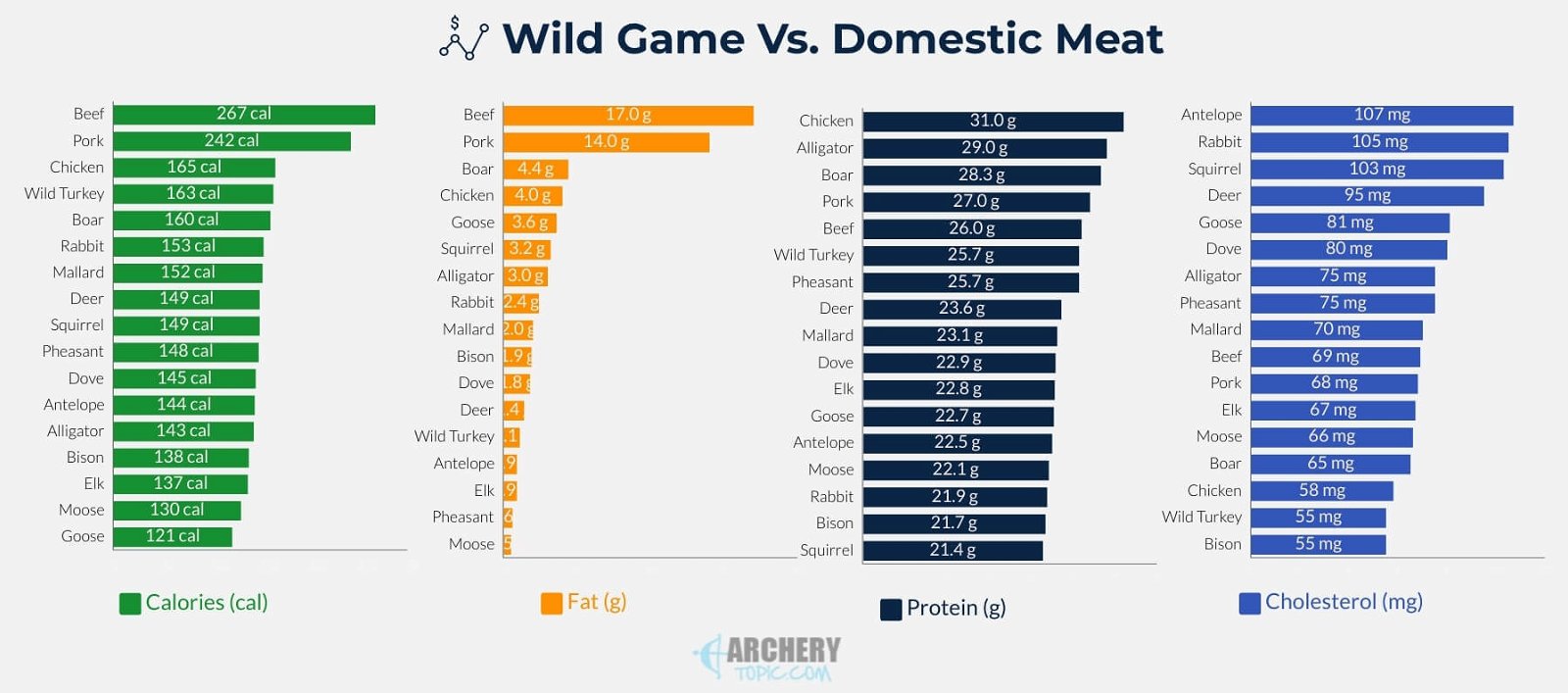
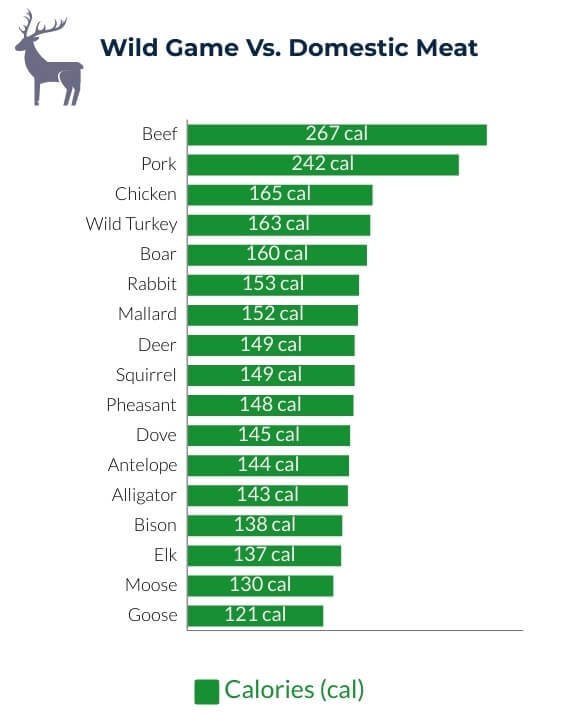



* Meat (100g) data provided from Self Nutrition Data
Is Wild Game Meat Safe To Eat?
Yes, wild game meat is undoubtedly safe to eat.
It is enjoyed by countless consumers around the world on an annual basis, with no ill effects.
However, it is important to take certain precautions when preparing and cooking wild game meat.
Wild game animals are susceptible to several diseases and can also carry various parasites.
It poses a slight risk for those who regularly consume game meat.
This risk is somewhat minimized when purchasing farm-raised game meat.
It stems from the fact that farm-raised meat has the same testing standards as any other domestic meat, such as beef and chicken.
Without this testing, farm-raised game meat is not certified for sale to the general public.
How Do You Make Wild Games Safe To Eat?
Luckily, even game meat of a wild origin is unlikely to pose much risk to consumers when properly prepared.
Always wearing gloves
Always handle raw wild game meat while wearing gloves.
Additionally, you should always change their gloves before touching clean surfaces to prevent cross-contamination.
Cook to Safe temperatures
All wild game meat should also be thoroughly cooked to safe temperatures to kill any bacteria, especially trichinellosis.
Hunter eating raw or undercooked meat from bear and wild boar can get trichinellosis disease, leading to diarrhea, abdominal cramps, nausea, and vomiting.
You can use a thermometer to check the temperatures and compare them to safe food prep temperatures for domestic meat:
In any event, carefully evaluate any abnormal-looking game meat of any variety.
You should consult their local wildlife biologist if they ever harvest an animal whose meat draws suspicion.
Discard the meat immediately if it can not be ruled safe for consumption by a specialist.
Additionally, you should never, under any circumstances, consume wild game meat that presents an irregular or foul odor.
How To Cook Game Meat

People consider the wild game to be among the best table fare available.
However, you should take special care when preparing wild game meat for consumption, as improper preparation often leads to a noticeable reduction in flavor.
The following tips will provide you with a general guideline for preparing your wild game meat in the most favorable manner possible.
1) Prevent Overcooking:

Most types of wild game meat are naturally lean and void of excess fat. Because of this, it tends to dry out much quicker when cooked than many domestic types of meat.
To avoid dryness, take special care to cook game meat to safe temperatures, without overcooking.
The USDA recommended temperatures for wild game is a minimum internal temperature of 160°F for wild game and 165°F internal temperature for wildfowl.
Red meat, such as deer, elk, or bison, should be cooked until medium, as it tends to be excessively dry and tough.
2) Use a Thermometer When Cooking:

A meat thermometer is a valuable tool when cooking wild game meat.
Use a meat thermometer to determine when safe internal temperatures have been reached, without cutting into the meat itself, thereby losing flavor.
The safe cooking temperature of game birds can be compared to domestic poultry while comparing the temperatures of the larger game to that of beef.
3) Marinades Prevent Dryness:
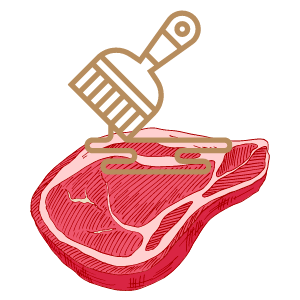
Marinate most any game meat before cooking. However, doing so provides game meat with much more than excellent flavor.
Marinade also provides extra moisture during the cooking process, which prevents game meat from exhibiting excessive dryness.
In turn, your game remains much more tender than it typically would when cooked dry.
4) Bacon Adds To Any Dish:

Those who appreciate the flavor of pork can add bacon to almost any dish. Doing so provides game meat with additional flavor and prevents dryness during the cooking process.
The practice of wrapping game meat in bacon is prevalent when grilling, as bacon juices leech into the base meat that it incases.
5) Slow Cook Tougher Cuts:

The butchering of most any game animal provides one or more cuts that tend to be more challenging than others.
These cuts are often best prepared with the use of a crock-pot.
When slow-cooked in a crockpot, the fibers of tougher meat cuts begin to break down, thereby creating a more desirable finished product.
6) Use Plenty Of Oil:

When cooking game meat in a skillet, use plenty of oil and butter.
It prevents game meat from sticking during the cooking process while also providing additional moisture to prevent dryness.
The liberal use of oil and butter results in a much more tender final product. Cooking game meat in this fashion retains flavor better.
7) Extra Flavor For Game Birds:

The addition of cream cheese is an excellent way to boost meat flavor from any game bird.
Butterfly the breast of a game bird open to create a pocket and place any flavor of cream cheese inside the pocket.
During the cooking process, this cream cheese melts into the meat itself, thereby depositing extra flavor.
8) Remove As much Fat As Possible:
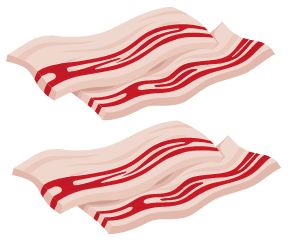
Before cooking any type of wild game meat, it is crucial to remove as much fat as possible from the cut in question.
It is also true of tendons and muscle sheathing, known by most as “silver skin.”
Removing such imperfections improves both the taste and texture of game meat and often simplifies the cooking process itself.
9) Cook Low and Slow:

Cooking wild game too quickly, at too high of heat, is a sure way to destroy the game meat’s flavor.
You can easily avoid it by cooking wild game meat at lower than normal temperatures for a longer duration of time.
Doing so preserves the meat’s flavor and prevents indue dryness.
10) Age Meat At Safe Temps:

Aging meat in temperatures between 36-42 degrees for 2-3 days can eliminate toughness and enhance the overall flavor.
11) Soak Meat In Milk:
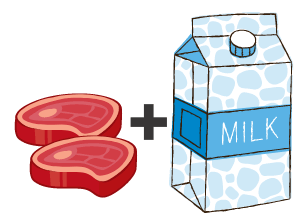
Depending on the age of the animal harvested, wild game meat can present a somewhat strong taste at times.
Eliminate much of this strong taste by soaking game meat in a cooler filled with milk.
Place plenty of ice within the cooler to keep meat temperatures within a safe range.
12) Brine If Preferred:

Alternatively, many hunters prefer to brine their game meat in a bid to enhance its taste.
This process involves soaking meat in a saltwater solution and is typically completed over 1-2 days, though the bringing of game birds can be done significantly quicker.
This process soaks much of the remaining blood out of game meat, providing a better taste.
13) Always Serve Warm:

Take care to serve game meat quickly after cooking.
As game meat cools, a somewhat greasy taste and texture are often left behind. It can quickly detract from the natural flavor of game meat, making it undesirable to many.
This also places increased importance on only cooking game meat in portion sizes that will be quickly consumed.
14) Provide Sauce For Additional Moisture:
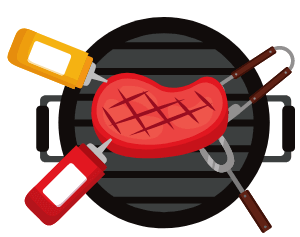
When serving wild game meat of various types, it can be beneficial to whip up a sauce to accompany such a dish.
Serving game meat with a dipping sauce of can be the perfect way to combat any remaining dryness.
Sauces of this type can be specially made or can be as simple as using leftover marinade from the meat preparation process.
Where To Buy Wild Game Meat Online?

Unfortunately you can not buy truely wild game meat in US, as it is illegal in North America for a hunter to hunt wild game and sell it (According USDA).
The following game meat are raised on ranches and/or privately owned. You should consider them as livestock, which are subject to growth hormones, antibiotics... that put stuff into the meat that wouldn’t be there in wild animals.
Ingram TX

Since 1983, Broken Arrow Ranch has served as a premier supplier of fresh venison, wild boar, and quail.
While the Texas-based supplier originally began as a wholesaler for restaurants, Broken Arrow Ranch expanded its sales to private consumers.
They allow you to order an array of wild game meat, straight from Broken Arrow, including the Ranch’s world-renowned venison.
Broken Arrow Ranch offers several packages for those wishing to fill their freezers with fresh game meat.
These packages provide enough meat to prepare several family-sized meals, and you can order in various configurations.
Some of the most popular of Broken Arrow’s meat packages include a special Griller’s Group package, as well as a Venison Variety package.
These packages range in price from $56-$144 in price.
Boonton, NJ

Fossil Farms began as a family-operated ostrich farm in 1997, supplying antibiotic-free ostrich meat to many consumers.
In short order, the family’s business had expanded, and Fossil Farms began partnering with other local farms to increase the variety of their offerings.
Today, Fossil Farms partners with over 200 small farms, which raise numerous game species under strict oversight and quality control.
At the moment, Fossil Farms offers one of the most comprehensive selections of game meat currently available to consumers.
Some of the farm’s most popular products include venison, alligator, bison, duck, ostrich, elk, pheasant, rabbit, wild boar, and squab.
Fossil Farms also offers a starter package for consumers who have limited experience in preparing and consuming wild game meat.
Los Altos, CA
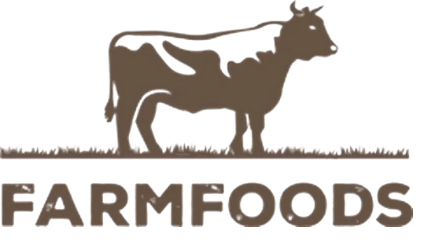
FarmFoods Market was founded upon the belief that every consumer should know the history of the meat they consume regularly.
The company initially specialized in the sale of antibiotic-free, grass-fed beef, though much of their business now pertains to the production of wild game meat.
Some of FarmFoods Market’s most popular offerings include elk, venison, bison, wild boar, rabbit, and yak.
FarmFoods Market’s website allows consumers to view the individual farms where their meat is produced and watch videos that detail each farm’s operational and management practices.
You can also count on receiving their order in a relatively quick fashion, as FarmFoods generally quotes delivery times of no more than 5-days.
Customers also receive free shipping on any orders weighing in at more than 10-pounds.
Woodbridge, Suffolk

The Wild Meat Company was founded in 1999 by Robert Gooch and Paul Denny.
The two entrepreneurs shared a common interest in eliminating much of the mystery surrounding the production and sale of wild game meat.
The two sourced all game meat directly from local farms in Woodbridge, Suffolk, to eliminate such concerns.
Meat from these farms was produced following strict management principles.
Today, the bulk of meat marketed by the Wild Meat Company is still produced in the Woodbridge area.
Some of the company’s most popular offerings include squirrel, rabbit, boar, venison, grouse, pheasant, partridge, and duck.
The Wild Meat Company also provides numerous delivery options, including expedited overnight shipping.
Ridgefield, CT

Allen Brothers are the perfect source of high-end products for those in search of highly refined, responsibly raised game meat.
Already known for their sale of premium beef, Allen Brothers expanded into the wild game market, offering some of the best possible cuts of elk and bison.
All cuts of this nature have been expertly aged and handled for maximum tenderness and flavor.
Some of Allen Brothers' most renowned wild game products include bison burger, bison fillet mignon, and elk tenderloin.
Additionally, Allen Brothers offer a sampler pack for those who wish to try various the company's most prized offerings.
Though the cost of Allen Brother’s various cuts is somewhat higher than that of other companies, their quality is unmatched.
Union, NJ
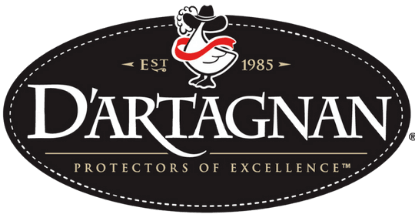
D’Artagnan is known throughout the custom meat industry as one of the premier suppliers of organic, grass-fed game meat for both the private and foodservice sectors.
The company provides rigorous oversight toward managing all games produced on their supply farms, with strict adherence to quality production practices.
This ensures that all meat sold by D’Artagnan is of the highest quality possible.
D’Artagnan’s most popular wild game offerings include bison, rabbit, venison, rabbit, wild boar, duck, and turkey.
Consumers can also order their selection of wild game in many different forms, including steak, sausage, and burger.
Many highly prized wild game packages are also available, which provide consumers with various options when planning their next cookout.
Plymouth, MN

Few forms of wild game meat are as prized or highly sought after as jerky or snack sticks.
Luckily, Hunter’s Reserve specializes in producing high-quality jerky of many different varieties, making it possible for anyone to get their fix of game meat-related snacks.
Even more appealing is that all Hunter’s Reserve products are produced by the industry’s most stringent quality standards.
Hunter Reserve offers duck, elk, venison, wild boar, alligator, bison, and pheasant snack sticks/jerky, offering consumers multiple options to choose from.
Each of these products can also be ordered in several different flavors.
Additionally, Hunter’s reserve also offers a wide array of wild game steaks and brats, adding further diversity to their product line.
Several searching for wild game meat, especially of the snack stick and summer sausage variety, can turn to Amazon for a wealth of options.
The online retail giant offers multiple pages of wild game-related products offered by a wide range of suppliers.
A quick search of Amazon will provide consumers with the opportunity to purchase such game meats as alligator, venison, wild boar, turkey, duck, elk, and bison.
Amazon is also an excellent option for new to wild game meat or unsure which meats offer the best flavor.
A wealth of variety packs are available for purchase, many of which include as many as 20 individual types of game meat.
You can also select the option for expedited shipping when placing their Amazon order, thereby making it possible to receive their game meat in only a few days.

Pearson Ranch is family-owned and operated, raising elk, buffalo and cattle in the beautiful southwestern mountains of New Mexico.
It has been in the meat snack business since 2000 when it started providing Elk products to Bass Pro Shops.
The primary focus of ranch operations shifted to meat snacks in 2011 and Pearson Ranch Jerky now offers a wide array of snack sticks, jerky and summer sausages featuring Elk, Buffalo, Venison and Wild Boar.

Sam’s is a small local butcher shop family owned and operated for the past 39 years in Aurora. We proudly custom cut everything in house and source all our meats as locally as possible.
We carry a full expanse of traditional cuts in beef, pork, poultry, lamb and seafood. However, we take great pride in catering to the more adventuresome, hosting a wide variety of exotic meats.
It’s one of our greatest highlights showcasing venison, elk, wild boar, yak, gator, antelope, kangaroo, quail, pheasants, turtle, rattlesnake and continuously expanding.
Top Wild Game Meat Restaurants

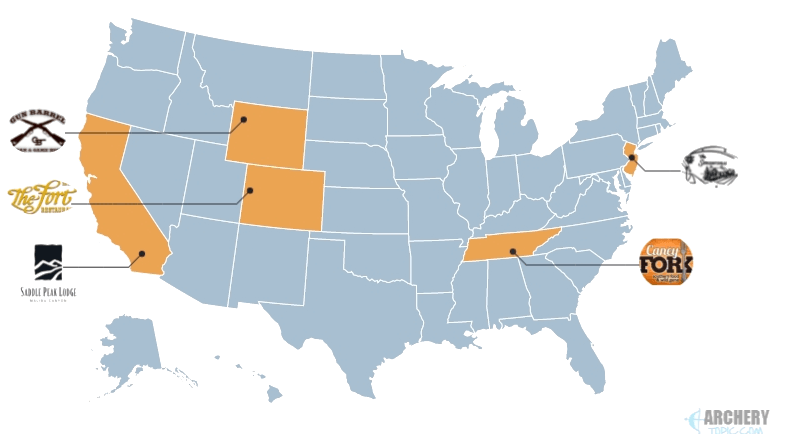

The Gun and Barrel Steak & Game House, founded in 1993, is one of the nation’s premier wild game eateries.
This restaurant serves a wide variety of elk and bison dishes, including Buffalo Sirloin, Buffalo Prime Rib, Elk Chop, and Bison Ravioli.
The restaurant also serves its signature venison bratwurst.
Diners will also feel like they are chowing down in a primitive western hunting camp when eating at Gun and Barrel Steak & Game House.
The restaurant's walls are lined with cowboy artifacts and taxidermy mounts that have been present in the building since its earlier use as Wyoming Wildlife & Taxidermy.

If you have ever dreamed of eating well-prepared buffalo, then The Fort in Morrison, Colorado, should be worthy of your attention.
The Fort distinguishes selling more buffalo steaks than any other independent restaurant in the United States.
Some of The Fort’s most famous dishes include Buffalo Steak, Buffalo Ribs, Teriyaki Quail, and Elk Chops.
Diners will feel as if they have been carried back into earlier pioneer days when eating at The Fort.
The restaurant itself is modeled after Bent’s Old Fort, which served as Colorado’s first fur trading post.
The Fort has also been the recipient of numerous culinary awards throughout its tenure.

The Sergeantsville Inn is quite renowned for its diverse range of wild game offerings.
A trip to this restaurant will provide you with the opportunity to try many different forms of game meat, ranging from wild boar to buffalo.
You can order diners with a number of wild game appetizers to pair with their entree.
Some of Sergeantsville Inn’s most prized wild game culinary creations include Wild Boar Rack, Buffalo Hangar Steak, Asian Pheasant Spring Rolls, and alligator fettuccine.
The restaurant itself is located within the historic inn of the same name. It provides diners with a rustic setting to enjoy their hearty feast.

The Saddle Peak Lodge Restaurant is based in a now-defunct hunting lodge and is nestled within the hills of Malibu.
This restaurant provides a high-end dining experience for anyone looking for something a little out of the ordinary.
Saddle Peak Lodge provides diners with a mix of rustic elegance and game-inspired culinary excellence.
Some of Saddle Peak Lodge’s most popular dishes include New Zealand Elk Tenderloin, Rabbit Roulade, Wild Boar Hash, and Bison Short Ribs.
The restaurant also offers a “Chef’s Game Trio”, which includes several different wild game entrees and many mouthwatering sides.

Caney Fork, located in historic Nashville, Tennessee, serves up many classic southern dishes and a wide array of wild game entrees.
Some of the restaurant's most-favored wild game dishes include:
Other favorites include the frog leg platter, as well as the mixed game sausage platter.
Diners at Caney Fork will be treated to a laid-back atmosphere, complete with live music from a bluegrass band, which regularly plays for diners on the weekend.
The restaurant’s walls are also lined with many game mounts and hunting/fishing-related gear.
Frequently Ask Questions

Wild game meat obtained during a hunt can not be sold in the United States.
However, the meat of game species typically found in the wild, which have instead been raised in captivity, can be sold under certain circumstances.
In the United States, meat must receive a Federal or State seal of inspection before being sold.
Therefore, game meat that has been farm-raised and has been properly inspected by a governing agency can be offered for sale.
Whether or not game meat is considered red meat varies from one species to the next.
By definition, this red meat (the meat of most large game species within the Cervid family) includesof deer, elk, moose, etc.
However, rabbit, turkey, pheasant, and quail meat is generally classified as white meat rather than red meat.
In many cases, these classifications are also open for interpretation, as wild game meat does not receive the same oversight within the domestic market.
You can ship wild game meat in most cases. Doing so is perfectly legal in almost every case.
However, some policies and procedures must be adhered to when preparing wild game meat for shipping.
Most shippers require you to package them in a styrofoam container and place them on dry ice.
You don’t allow the use of regular ice when attempting to ship game meat of any type.
Additionally, you should clearly label all coolers containing game meat to “keep frozen” or “perishable.”
The exact process for donating deer meat typically differs from one state to the next.
However, most states collect donations through designated meat processors, who prepare donations for distribution to food pantries and homeless shelters.
To learn more about how to donate deer meat within your area, contact your state’s fish and wildlife agency.
They will tell you detailed instructions, such as where to direct donations.
The USDA (United States Department of Agriculture) specifies that frozen, uncooked game meat is generally good for up to 8-12 months.
During this period, wild game meat, including that of elk, should retain its original flavor, texture, and vitamin content.
On the other hand, ground game meat becomes suspect after 4-5 months and should be carefully inspected before consumption.
Beyond this interval, ground meat is usually considered safe to eat, though its flavor is likely to suffer.
Now, Your Turn
So that's my ultimate guide of wild game meat.
Now your turn:
Just let me know by leaving a comment below.

